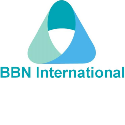Fibre Optic Components
Fibre optics use light pulses to transmit information down lines instead of using copper being used to send electronic pulses. Because of its many benefits, it is slowly replacing copper wire. Optic fibres are concentric layers of core, cladding and jacket while the fibres themselves are made of mainly pure silica. To ensure the successful transmission of data, fibre optic systems have a number of components. The cable itself can be three types: single mode, multi mode and plastic optical fibre (or POF). There are various speciality types including interlocking armour cable and outdoor cable. The connectors to join cable are most commonly made of epoxy and polish, which avoids the need for adhesives or crimping. Other components include a LED to generate the light pulses and a lens to funnel the fibre-optic medium into the cable. At either end, transmitters and light-sensitive receivers convert the signals while light strengtheners might be needed to refresh the signal. Fibre optics have a number of applications. Some power companies use them in their communications systems to monitor the grid. They are also used by telephone companies and cable television to send their signals. Other applications include sensors and bio-medicals.
-
BBN International Ltd
View company profileBBN International is a specialist supplier of fibre optic instruments, network systems, active devices, passive components and consumables to the telecom, datacom, aerospace, sensor, broadcast and research markets.

